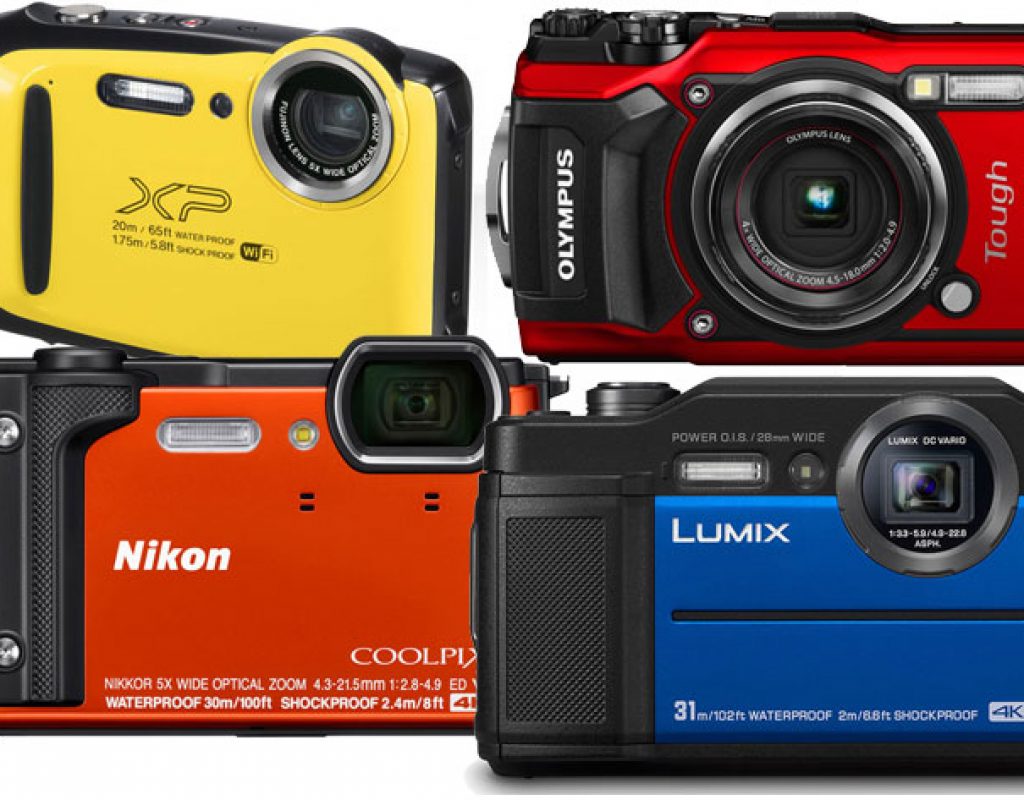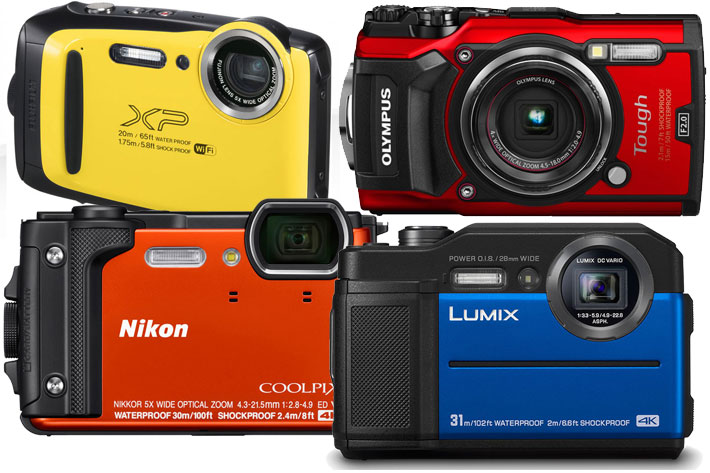
Olympus, Panasonic, Nikon or Fujifilm are some of the companies offering compact cameras able to withstand the most punishing environments, so you can take your video and photography passion everywhere.
When you think of action cameras, which can be used almost anywhere, you immediately think about GoPro and similar models. Yes, those are, no doubt, action cameras, but what if you want something that looks more classic, a camera that looks like a camera, and still offers you all the options you immediately associate with action cams?
That’s the premise used in this guide, which looks at cameras that you can use everywhere, from a formal dinner at the best restaurant in town – where a GoPro would look strange… – to when you go climbing, hiking or scuba diving. In fact, for this guide, the ability to go underwater was considered as a must for a camera to be included, along with the ability to deliver video. Although 4K is the target in terms of moving images, FullHD models are also included, simply because they are still around – and will continue for some time – and many times offer good enough results to be considered, even for professional uses.
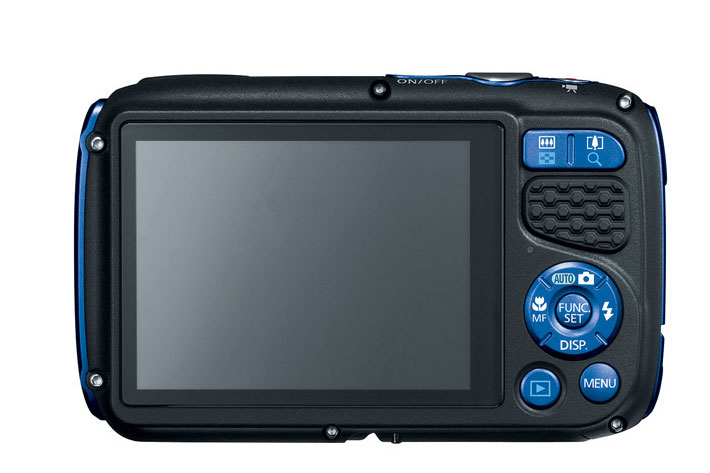
This guide serves, yet, another function: to offer ProVideo Coalition readers an overview of the best cameras available in this segment, and not only to use as a take everywhere camera. These models can also be used as “second cameras”, for some projects, and their potential as image capturing devices is far wider than you may think. And in the worst case scenario, when a camera gets damaged, their price makes for affordable, expendable, B-roll cameras. Let’s demonstrate this with some examples.
Imagine you are shooting a story about an outdoor location, like a forest, that has a stream. Your main camera is, let’s say, a DSLR or mirrorless, but you would like to have some footage captured near the water, or underwater, on the shallow areas of the stream, for a different perspective. As you do not have an underwater housing or any other way to protect and use your DSLR, you need a second camera for this footage. Yes, an action cam would probably do the trick, but what if you want to be able to control more aspects? Then one of the cameras in this guide may be the ideal choice to complement your gear.
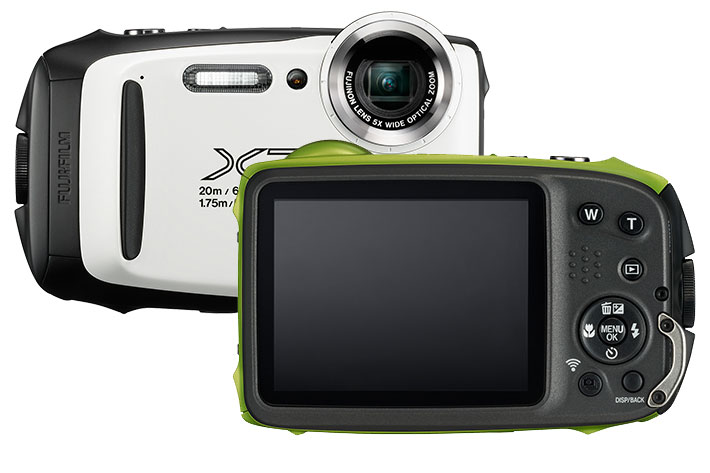
The example above is not the only one I can give you. Shooting by a pool side, again, a camera that is water resistant and also goes underwater may be your first and/or second camera for unique perspectives, along with those shot from land. Or shooting on location along coastal areas, where an underwater camera can be used for things as capturing stills and video in pools full of life, revealed at low tide. In fact, you don’t need to go scuba diving to use one of these cameras, so maybe it is a good idea to add one to your shopping list if you find yourself in situations similar to those described, and need a camera to cover those angles.
This guide looks at camera introduced to the market in recent years, and it does not aim to cover every single model available, but give you, instead, an idea of the variety of choices available. There is no “best” or “worst” camera here, as, despite the fact that they do share some common specifications, each model may offer specific features or options, like going down to 30 something meters, that may make more sense for some uses. So, please, browse through this guide and check the models, to better define the one that better suits your needs. One more note: this guide was made with video footage capture in mind, so the specs for video take precedence here. That does not mean, though, that these cameras are not to be used for photography. I simply believed that it made sense to look at the moving images potential these compacts offer. They are interesting tools to have in your bag, if you want to widen your options in terms of video. And they also take photographs!
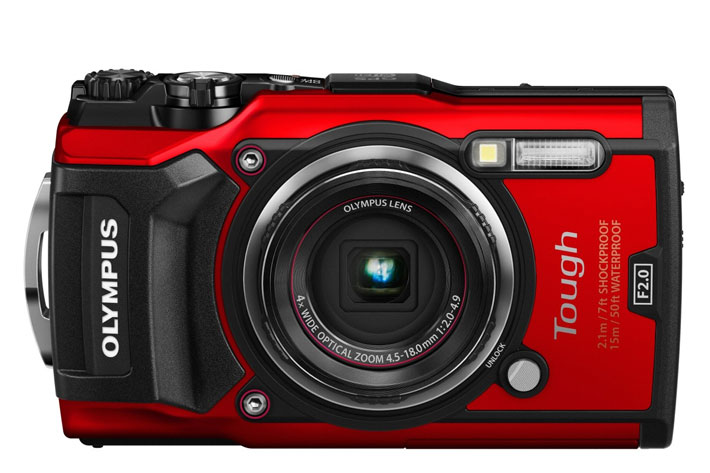
Olympus TG-5, the Tough compact
Introduced to the market in May 2017, the Olympus TG-5 continues with the tradition of the TG series from the company, introduced in 2012. Touted by some as the new underwater camera king, the TG-5 introduces 4K Movie to the line, allowing the user to capture Ultra HD video – 3840×2160 (4k) / 30p, 25p (Bit rate: approx. 102Mbps) – along with multiple options in lower resolutions. The camera also offers a Full HD 120 fps High-Speed Movie that lets users capture slow-motion, and for those time lapse followers, there is also a 4K Time Lapse mode that automatically creates short videos of long periods of time.
The 4K Movie on the TG-5 is served by a new high-performance backlit 12-megapixel CMOS image sensor, Olympus’ latest high-speed TruePic VIII Image Processor and a Field Sensor System that records movement and environmental data. A bright f2.0 lens zoom lens (f/4.9 at the tele-end), covering everything from a wide-angle 25mm to a telephoto 100mm (35mm equivalent) focal length, guarantees ample creative freedom, not usually present in action cams. Because the TG-5 is to be used in a variety of conditions, some of them meaning a sudden change in temperature, Olympus introduced a new feature anti-fog: the dual-pane protective glass provides an airtight seal that protects the lens and minimizes condensation on the lens, so you don’t have to wait patiently for the condensation to go before start shooting!
https://youtu.be/8YhUNfOj52A
Annelie Pompe, a professional adventurer from Sweden who has used the TG series for many years, said this about the camera: “I go climbing, freediving, running, skiing, surfing, kayaking and mountain biking so I need a camera that can go anywhere, stand the pace and create great pictures. The TG-5 takes all this in its stride and I love the new control dial and anti-fog dual pane glass – when you are in and out of freezing water these will make a great camera even better to use.”
The zoom lens in the TG-5 comes associated with a Variable Macro System which consists of four shooting modes for expanded macro photography: Microscope mode, Microscope control mode, Focus stacking mode and Focus bracketing mode, highly specialized modes that expand the potential of the camera. And because the TG-5 is a system camera, Olympus offers two separately available accessories for close-up shooting.
While some of these modes and accessories are for photography and to be used on land, the camera also offers four underwater modes including Underwater Wide, Underwater Macro, Underwater HDR, and Underwater Snapshot. Image quality underwater is also improved, via the new TruePic VIII image processor, which offers a better reproduction of natural colours underwater. The TG-5 is waterproof up to depths of 15 m, but if you need to go deeper, Olympus has designed a case specifically for the TG-5 that can withstand pressure to a water depth of 45 m.
In addition to being waterproof to 50 feet (15 meters), the Olympus TG-5 is also crushproof to 220 pounds of force (100 kilograms of force), shockproof from 7 feet (2.1 meters), freezeproof down to 14°F (-10°C) and dustproof. Because it is a camera for outdoor and adventure, it also comes with a built-in Field Sensor System, that will record data about your photos and videos.
https://youtu.be/cKdR7DzohHA
Consisting of a GPS sensor, manometer, compass and temperature sensor, the Field Sensor System records movement and environmental data independently or in conjunction with still images or videos. Data logs can be simultaneously displayed with images and videos using the Olympus Image Track app, enhancing the experience of reliving and sharing outdoor adventures.
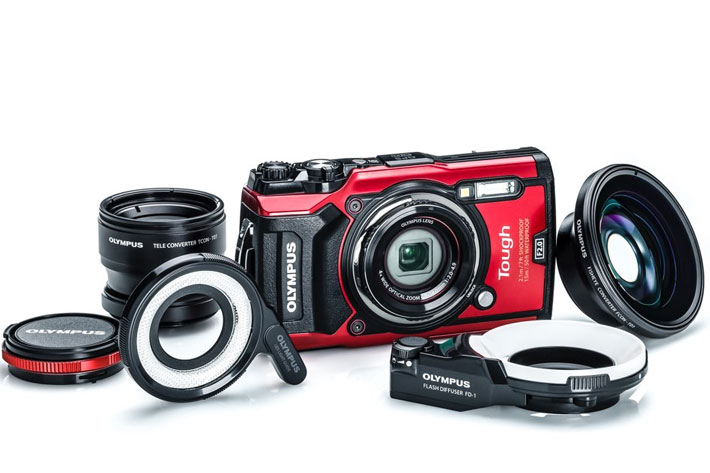
Final notes: the TG-5 shoots RAW, giving you complete control over the final images. Also to consider is that the camera is part of a system, and Olympus has designed other accessories to use with it, from a silicone jacket to protect the body, to converter lenses, like the Fisheye Converter FCON-T01 or the Tele Converter TCON-T01 (gives you a 170mm equivalent telephoto setting), which can be used underwater.
The Olympus Stylus Tough TG-5 is available in red and black with an estimated street price of $449.99. It’s a fantastic little camera, and I know this because we’ve one around the house, as this is the model we picked.
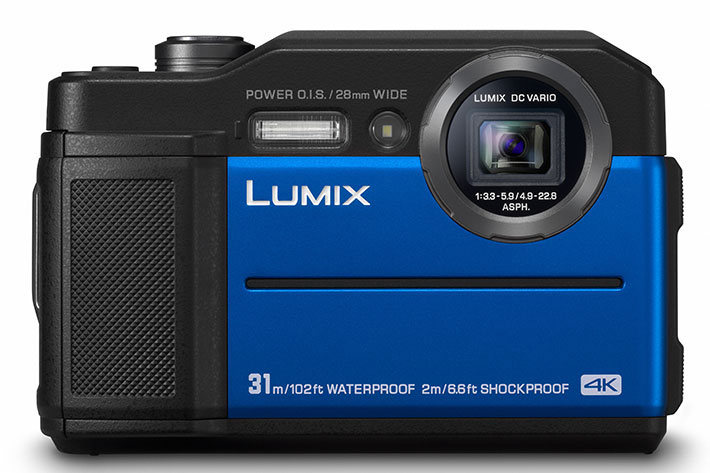
Lumix TS7: a viewfinder and 4K video
The most recent underwater camera from Panasonic, the Lumix TS7, introduces 4K video in this line of cameras from the company, and is also the first camera of its kind to offer an electronic viewfinder. True, you’re not going to use it much underwater, but it’s a good option when capturing images in sunny days, when using the LCD is impractical.
In terms of video, the Lumix TS7 features 4K UHD video recording, meaning it is able to shoot 3840 x 2160 video at 30p/ 24p in MP4 in addition to Full-HD 1,920 x 1,080 60p videos in MP4 (MPEG-4 / H.264) format with practical full-time AF. Among other options, the camera also offers a High Speed Video feature which enables recording in HD (1280×720) at 120 fps/100 fps. Time Lapse /Stop Motion Animation functions are also available.
The camera’s 4.6x optical zoom features a 28-128mm F3.3 – 5.9 (35mm equivalent) for stills and a 30-140mm (35mm equivalent) in video recording. POWER O.I.S. (Optical Image Stabilizer) is also available in video recording to suppress hand shake, and Panasonic has included an Auto Wind Cut function to block most of the noise created by background wind.
https://youtu.be/5MLdQKI6DSM
The sensor on the TS-7 is also an evolution, in terms of resolution, offering 20.4-megapixel against the 16MP of the previous camera, the TS6. Waterproof (up to 31m/102ft), shockproof (to 2m/6.6ft), freeze proof (to -10°C), dustproof and pressure resistant (to 100kg/220lbf), the TS7 is, according to Panasonic, the perfect rugged companion for all your extreme experiences.
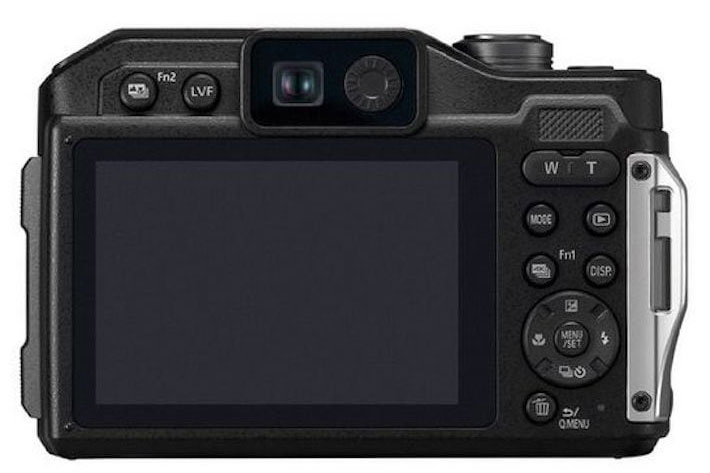
We’ve recently published more information about the Panasonic Lumix TS-7, which you may want to check if you want to know more about this model. As a final note here, it should be said that this camera does not offer RAW, but that, because it is an adventurer’s camera, it comes with a compass and altimeter, making it ideal for a huge range of outdoor activities, including fishing, camping, diving, snorkelling, surfing, snowboarding, skiing and mountain climbing.
Available this Summer in blue, orange and black, with a price of $449.99, the Lumix TS7 is your 4K UHD video camera if you like to go underwater, down to 31 meters.
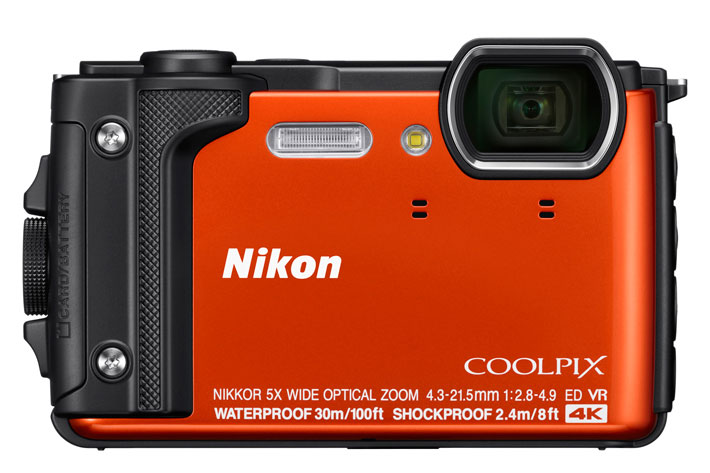
Nikon COOLPIX W300, the spirit of Nikonos
The spirit of the original Nikonos continues alive in the strong orange color of the Nikon COOLPIX W300, an underwater camera able to shoot 4K UHD movies and waterproof to 30 m.
Years ago, underwater photographers only had a name for cameras: Nikonos. The underwater cameras from Nikon where the absolute dream, an evolution of the original Calypso cameras designed by Jacques-Yves Cousteau and Jean de Wouters. Launched in 1963, the Nikonos was and continues to be a popular camera with underwater photographers, although Nikon ceased production of the compact models in 2001. In 1992 Nikon also introduced the Nikonos RS, the world’s first underwater autofocus SLR, which I tried back in the early 1990’s, but with digital taking its first steps the company saw no reason to continue development of the Nikons brand.
https://youtu.be/mpQhtLVl21Q
The Nikon COOLPIX W300 is a 4K UHD camera (3840 x 2160 at 30p), which is also equipped with functions for recording not only time-lapse movies, but also Superlapse movies. Superlapse movies are recorded and saved in fast motion, enabling recording of unique movies with which changes in the subject that happen over time are compressed into minutes or even seconds.
The COOLPIX W300 features a 16-MP backside illuminated CMOS sensor paired with a 5x optical zoom – 24-120mm f/2.8-4.9, 35mm equivalent – and a 10x dynamic fine zoom for detailed images from far-away distances, even in challenging light. The camera’s hybrid VR technology provides up to three stops of compensation to capture sharp images and smooth 4K UHD (3840×2160/30p) videos, great for when snorkeling or rock climbing.
The W300 is waterproof to depths of 30 m, allowing those with a recreational diver’s license equivalent to the PADI’s Advanced Open Water Diver license, recognized the world over, to shoot photos and movies while diving to approved depths without using a separate underwater housing. The shockproof characteristics so popular with its predecessor, the COOLPIX AW130, have been improved to withstand falls from up to 2.4 m. What’s more, the camera’s tough body is designed not only to withstand temperatures as low as -10°C, but also to resist dust and sand providing fun, worry-free use on both a daily basis and for extreme outdoor activities.
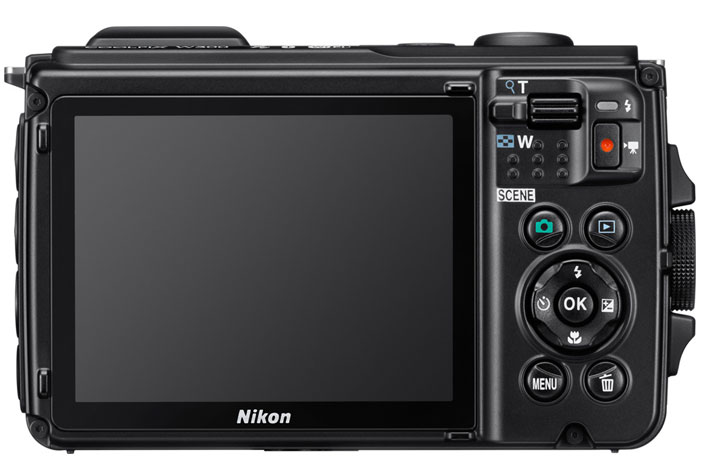
With a new grip and shutter-release button that make the W300 easier to operate, even when wearing gloves, this is a camera that will also look great for use around town. The camera features a new LED light button that can be used to turn on the LED light, convenient when preparing to take pictures or record movies, in dark surroundings. And because it’s an outdoor camera, it includes the new Active Guide feature, that displays information useful for outdoor life such as location data and altitude (water depth). Easily track and view your course, steps taken, altitude, depth—even atmospheric and water pressure—with the COOLPIX W300, says Nikon. As usual, verified location data can also be added to photos and movies after they are recorded.
It should be noted that, not all video features are available when recording in 4K UHD, and that the camera does not shoot in RAW. But it does come in a variety of colours – black, yellow and orange – and has some accessories, like an external flash for underwater photography, that open for more creative explorations. The Nikon COOLPIX W300 has a suggested retail price of $389.95.
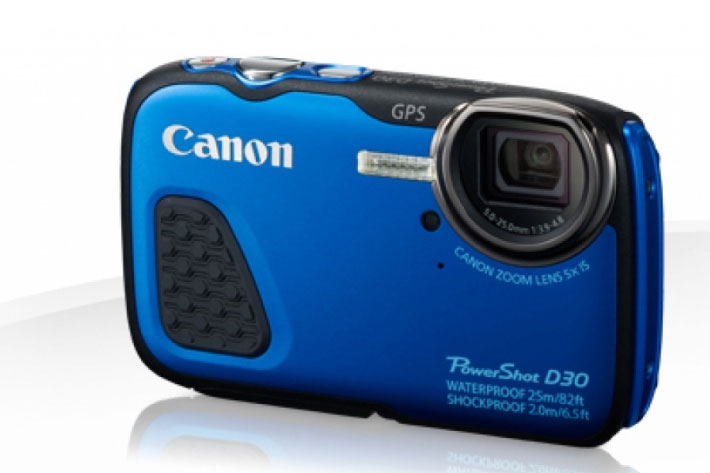
Canon PowerShot D30, a 2014 model
Canon has, apparently, left the field of underwater compact cameras, as the PowerShot D30 is their last model, and it is from 2014. It is true that Canon offers underwater housings for some of their PowerShot models, which are a viable solution, although usually more expensive and cumbersome, but for this guide I wanted to center on models that can be taken underwater without any extra accessories, and the D30 is Canon’s best offer.
It’s a dated model, not offering many of the things more recent cameras have, like WiFi, which seems to be essential in a world where being always connected is a “must have” specification for many people, but if all you need is a camera to take with you everywhere and are happy with video at 1080p at 24fps and mono sound, then this is the camera to choose. The PowerShot D30 also offers some special movie modes, like Super Slow Motion Movie (640 x 480, 120fps), to slow down fast movement, and Movie Digest, which records up to 4-seconds of action before each still shot, to create a bonus HD movie with all the moments of the day.
https://youtu.be/6kctqE_EF90
At launch, the Powershot D30 was able to go deeper underwater than its competitors, at 25m/82ft, but now it faces competition, as new models from brands like Panasonic or Nikon go down to 30 and more meters… if ever you need to dive that deep, and have enough light down there to use one of these models without accessories. Featuring a F3.9-4.8, 28-140mm zoom lens with lens-shift image stabilization, a nice range for a compact this size, the D30 has a 12MP sensor and offers a 7.5cm/ 3.0″ 460k dot LCD screen for composing your images. Active display with Tap Control offers, adds Canon, “comfortable reviewing of images even when wearing gloves.”
Constructed for harsh conditions, the PowerShot D30 is also shockproof to drops from up to 2 m, freezeproof for using it in temperatures as low as -10 °C and is fully protected from dust – so it’s ideal for the most extreme outdoor activities, from snowboarding to scuba diving. The camera was designed with underwater in mind, so it excels in low light, and offers an underwater mode which adjusts the colour balance so the resulting images and videos show natural colours. There is an Underwater Macro mode available which is ideal for sharp, clear close ups of marine life.
Compared to the recent models made available, the PowerShot D30 does not seem to be your best choice, and the price asked for it, $330, makes this four year old camera less of a bargain. Canon USA does have the camera refurbished, for $199.99, too, but it is out of stock and it probably will continue to be. Still, if Canon is your brand, this is the only underwater camera from Canon – without housing – available at the moment… if you can find one. Just remember that the many bells and whistles from other cameras – and no, there is no RAW format in this model, if you asked – are not present here.
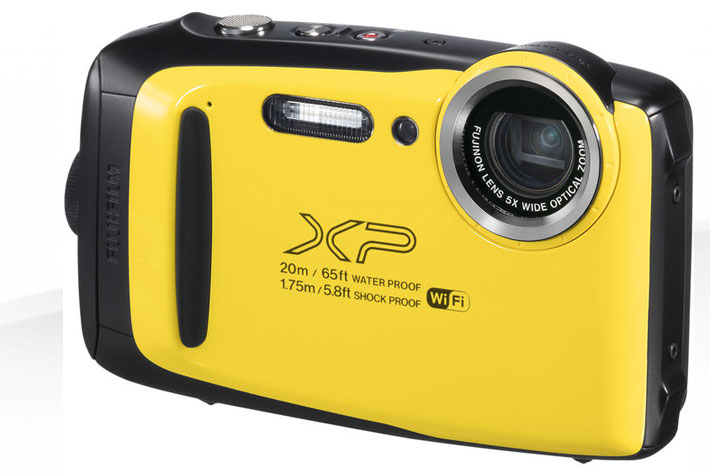
Fujifilm FinePix XP130, simple and affordable
Introduced January 2018, the FinePix XP130 from Fujifilm is the most affordable new underwater camera you can get your hands on. Priced at $229.95, although it can be found for as low as $169.00, the FinePix XP130 is available in five colours – black, blue, green, yellow and white – and is able to go underwater as deep as 20m/65ft, if ever you need to go that deep.
As a rugged camera, the FinePix XP130 is also shockproof up to 5.7 feet / 1.75 meters, freeze proof to 14°F / -10°C and dustproof, and features a protective, double-locking mechanism for the battery compartment. With a grip design for firm one-handed grip, the new XP130 is designed for ease of use and is tough enough for shooting in all situations.
The FinePix XP130 can shoot 1920 x 1080-pixel full HD video at 60/30p. A dedicated movie recording button makes it easy to switch to movie recording mode with a single touch. Fujifilm will tell you the camera also captures action at up to 320 fps, but the resolution, 160 x 120 pixels, does not suggest you’ll be able to use the video for much. More interesting is, probably, the Time-Lapse Movie mode, along with a Cinemagraph mode, which produces still images with moving elements.
https://youtu.be/GrDYbOwkp6Q
Featuring a 16.4MP back-illuminated CMOS sensor and a 28-140mm F3.9-4.9 FUJINON 5x optical zoom lens, paired with a 3″ LCD and equipped with new shooting functions such as an Electronic Level and Eye Detection to provide even greater versatility, the FinePix XP130 is also a “always connected” camera, with the latest Bluetooth technology, so users can instantly transfer images to a smartphone or tablet, while syncing time and location information from the camera to the images. Utilizing the free “FUJIFILM Camera Remote” app, users can take advantage of this new feature to quickly and easily share photos and videos with family or friends. Images can even be transferred from the XP130 directly to an Instax SHARE Printer.
Packed with a whole series of functions, the Fujifilm FinePix XP130 is compact and lightweight, and features operation buttons which are of optimal size and positioned to enable smooth operation and ease of use even while wearing gloves or holding the camera with one hand. While it may not be a 4K UHD model or offer specifications similar to models as the Olympus TG-5, it is an affordable and simple camera that will be ideal if all you want is a travel companion to capture your best moments.

Filmtools
Filmmakers go-to destination for pre-production, production & post production equipment!
Shop Now